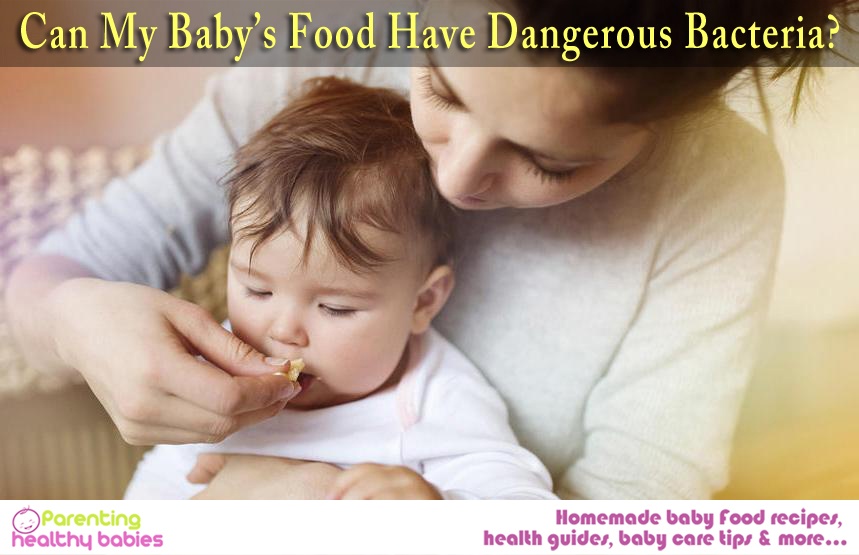Some of the common toddler tooth problems include baby bottle caries, tooth decay because of plaque, tooth abscess, sensitive teeth, tooth discoloration, over-retained baby tooth, malocclusion, abnormal tooth structure, etc and more have been discussed. The remedies for these toddler tooth problems have also been discussed.
Toddlers often have tooth problems that keep them awake all night, bawling and clutching their cheek in pain. This also means sleepless nights for parents. But careful brushing and proper pediatric dental care can do away with most of these sources of discomfiture. Pediatric dentists prescribe medications for most of the problems and if detected early, your toddler will barely feel any pain before the condition sets in. Some of the most common tooth problems seen in babies are described below, along with steps to take to prevent these problems.

Source: Tesco Living
Common tooth problems in toddlers
Here is a list of common tooth problems in toddlers
1. Baby bottle caries
A baby is usually fed on mother’s breast milk, formula, fruit juice or other sweet liquids. When tiny amounts of these sugary liquids get trapped in the crevices of their teeth, brownish or blackish decays appear on the teeth. It is commonly found on the front teeth of the upper jaw. If toddlers are given a bottle of milk before going to sleep, the condition worsens because this last drink does not get washed or brushed away and stays on the surface of the teeth all night. These deposits of dried milk cause plaque and excess plaque build-up leads to the ‘caries’. To prevent this, make sure your toddler washes his mouth very well after drinking milk or juice and avoid a bedtime drink.
Read More: Swallowing Toothpaste By Children: Risks and Treatment
2. Tooth decay
When toddlers have carbohydrate rich foods like cookies, candies and fruit roll-ups, little chunks of sweet particles are trapped in their teeth. These deposits are the perfect breeding ground for bacteria which grows rapidly and exponentially in the moist, warm environment inside the mouth. Even bits of rice, potatoes, pasta or other cooked starches have the same effect. These build up plaque and the bacteria release acids, which strip away the tooth enamel, causing decay. The only way to prevent this is good oral hygiene. From a very early age, teach your toddler to wash their mouth every time he eats and brush twice a day.
3. Tooth abscess
Tooth abscess forms when tooth decay or caries have been left untreated for long. It can lead to gum swelling which gives the child’s appearance of constantly having something large on one side of the mouth. Sometimes, when tooth decay starts in the molars or pre-molars, it often goes unnoticed, which makes way for tooth abscess. For immediate relief, dentists prescribe painkillers and antibiotics. But once the abscess forms, nothing but root canal can undo the damage. To prevent this, get your toddler’s teeth routinely checked and treat decays as soon as the first symptoms are visible.
4. Sensitive tooth
Does your toddler slap his hand on his cheek with an expression of pain every time he bites into his ice-cream or drinks hot milk? It probably means he has sensitive teeth which cause irritation on contact with food or drink at extreme temperatures. If the enamel has worn away over time due to the acids which the bacteria in the plaque release, the tooth becomes sensitive. Tooth sensitivity can also be caused by tiny cracks in the tooth or receding gums (caused by improper brushing). To resolve this problem, desensitizing toothpastes can be used regularly while fluoride varnishes can restore the lost protective tooth shield.
Read More: Abscessed Tooth In Child: Ultimate Guide
5. Tooth discoloration
Tooth discoloration can either mean uniformly yellowish teeth or brown or flaky white spots on the surface of the teeth. It can be caused by several reasons. One of the main reasons, especially in kids, is not brushing properly or not cleaning well enough after eating. Sometimes toddlers are on medications which give their teeth a distinct tint. For example, iron supplements give teeth a dark appearance while breastfeeding toddlers, whose mothers take tetracycline supplements, may get brown stains on their teeth. Apart from that, blunt trauma to the teeth may make them reddish.
6. Over-retained baby tooth
Sometimes the permanent tooth starts growing even before the primary tooth in the same position has fallen out, i.e., it has been over-retained. To solve this, small surgical procedure is needed where the doctor operates and takes out the primary tooth. There is no way you can prevent this, but if your kid complains of pain consult your dentist immediately.
7. Malocclusion
Malocclusion refers to uneven jaw dimensions, which results in a bite that does not quite meet (i.e., mild to severe underbite or overbite). In normal occlusion, the front teeth in the lower jaw are supposed to touch the inside of the front teeth in the upper jaw. In case of deviation, it can be attributed to malocclusion. Sucking thumb or tongue thrusting can lead to occlusion, so make sure your toddler doesn’t catch that habit. Accidents or hereditary factors also lead to malocclusion.
Read More: When to Start Brushing Baby’s Teeth?
8. Wisdom tooth
Wisdom teeth are four extra teeth that grow at either end of each jaw. Being thick like molars, they require quite some space. Naturally, teenagers, whose jaws have significantly grown throughout the growing period, are best suited to get wisdom teeth. But when a wisdom tooth erupts in toddlers, their tiny jaws cannot fit the extra tooth. So severe pain and swelling is often felt. Immediate dental care is necessary at such an event.
9. Grinding
This is an involuntary habit that toddlers adopt because of the shivery feeling in their gums that is often felt during growth of primary teeth. Although many children grow out of this habit after teething, if it persists, it can wear the enamel and primary coating of the teeth away. This can lead to tooth decay or sensitive teeth or even pain in the gums. If your child is grinding his teeth in his sleep, get him to wear a nightguard.
Read More: 11 Serious Mistakes Parents Make With Their Kids’ Teeth
10. Abnormal tooth structure
If your child’s tooth structure is not perfect, it will start showing at this stage. It is usually possible to correct it with braces, but there could be need for dental procedures. Your toddler may be growing supernumerary teeth, which means excess teeth. It can disrupt or delay the growth of permanent teeth or even may disturb the alignment of the rest of the teeth.
11. Mixed dentition stage
Mixed dentition stage refers to the problems associated with mixing up of discrete dentition stages. For example, even though a permanent tooth may be ready for the eruption, the deciduous tooth may not have loosened. This may lead to misalignment of the permanent tooth. Again, if the primary teeth fall out too early, it can also lead to problems of misalignment. To get regular updates on how far along your toddler’s permanent teeth are and if the deciduous teeth will create problems, take your little one for routine dental checkups.
Read More: Broken Teeth in Children: Causes and Treatment
12. Tooth trauma
Accidents happen, especially when toddlers play and run around in unsure steps. Trauma is a major factor in tooth damage in children. A tooth may get chipped or it may be knocked out completely. Internal gum bleeding and swelling are also possible outcomes of trauma. There is no foolproof way of preventing trauma, but helmets, protective gear is necessary when roller-skating or riding bikes.
13. Crooked teeth
Crooked teeth are mostly results of bad dental habits. If your toddler likes putting different objects like toys or the edge of his clothes in his mouth, his teeth may become misaligned or gaps may appear between his front teeth. Biting fingernails, sucking on the thumb or even chewing on pencils- all habits acquired during this stage- can lead to crooked teeth. Misalignment of teeth also creates small crevices where plaque formation, bacteria growth is likely. So, crooked teeth are more prone to decay than normally formed teeth.
Read More: baby teeth adult teeth
14. Early tooth loss
Losing deciduous teeth early is a form of mixed dentition stages, but the problem is more common. Premature tooth loss could be due to an injury or trauma or periodontal disease. Periodontal disease causes inflammation and infection in the gums which loosens the base of the primary teeth. As a result, the teeth fall out before the permanent teeth are ready to erupt.
15. Other related problems
Your toddler may face some of these additional problems:
- Gum disease- Inflammation of gums, gingivitis, can lead to early tooth loss, teeth abscess and other dental problems. If your toddler has bad breath, it is better to get his gum checked.
- Sores- Although not strictly a tooth problem, small ulcers may erupt inside the mouth of toddlers. Using antibiotic mouthwashes, these ulcers can be greatly diminished. Usually bad dental hygiene leads to these sores.
Although these problems seem terrifying to new parents, they are not untreatable and more importantly, they are easily prevented. There is no need to get anxious every time your toddler feels something in his tooth. Pediatric dentists are well trained in discerning real and made-up problems (that may get your toddler out of drinking his glass of milk for the day). Take your toddler for regular checkups, cultivate good dental hygiene habits in him early, insist on washing mouth thoroughly after meals and you can rest assured that your little one is well cared for.
Read More: When Should I Start Brushing my Baby’s Teeth?












